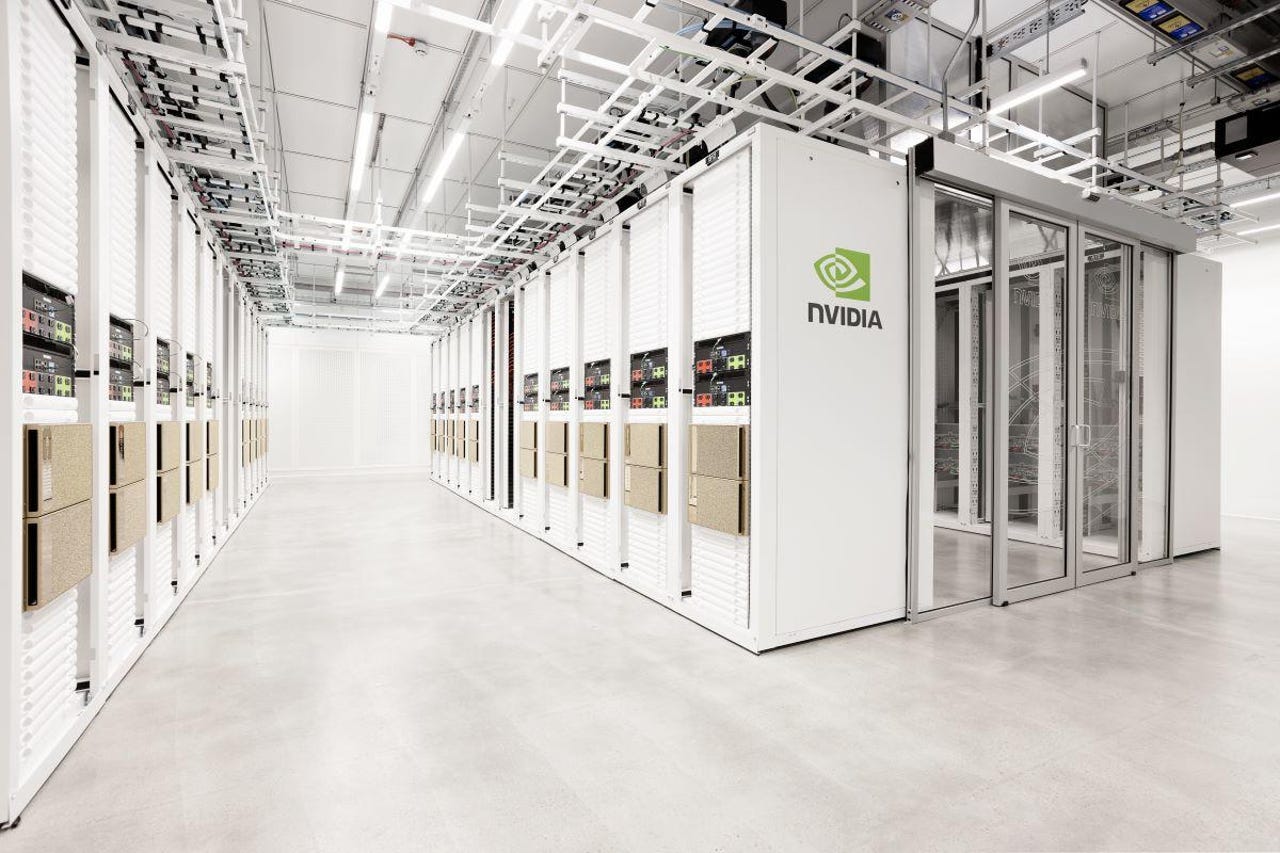Fastest supercomputer in the UK is ready to go: Here's what it's going do


Cambridge-1 is expected to step up research capabilities across the UK in fields like digital biology, genomics and drug discovery.
Cambridge-1, the UK's fastest supercomputer, is officially up and running – but forget about super-accurate weather predictions or investigating the downfall of dinosaurs: this one is exclusively dedicated to advancing healthcare and boosting the life sciences industry.
Launched by Nvidia, which invested a total $100 million in designing and building the device, Cambridge-1 is expected to step up research capabilities across the UK in fields like digital biology, genomics and drug discovery.
Digital Transformation
The system was built in only 20 weeks, despite the restrictions caused by the COVID-19 pandemic, which stopped Nvidia engineers from crossing the Atlantic to assist their UK-based colleagues during the build.
SEE: Guide to Becoming a Digital Transformation Champion (TechRepublic Premium)
Instead, the company resorted to a number of technologies, ranging from sophisticated computational modelling to remote-controlled mobile robots, to make sure that Cambridge-1 could be delivered and launched on time.
Healthcare data is growing exponentially – a trend that has only accelerated during the COVID-19 pandemic. When used appropriately, this data can be precious: it can help inform decisions in the lab when developing a new drug, all the way to improving patient care thanks to personalized treatment.
But according to Nvidia, until now UK researchers did not have access to sufficient compute power to tackle the huge amounts of the data they possess and draw useful insights that could unlock these opportunities.
With Cambridge-1 now online, this could change. The supercomputer packs 400 petaflops of AI performance and eight petaflops of Linpack performance, and is powered by 80 of Nvidia's DGX A100 systems, which are designed to build and run AI projects at a large scale – in this case, machine-learning applications dedicated specifically to advancing healthcare research.
Just 20 of the DGX A100 provide the equivalent of hundreds of CPUs. Nvidia has pitched the system as the fastest in the country, and Cambridge-1 also takes the 41st spot on the Top500 list, which lists the 500 most powerful supercomputers in the world.
"Cambridge-1 will empower world-leading researchers in business and academia with the ability to perform their life's work on the U.K.'s most powerful supercomputer, unlocking clues to disease and treatments at a scale and speed previously impossible in the UK," said Jensen Huang, the founder and CEO of Nvidia.
A recent report carried out by economics consulting firm Frontier Economics shows that the supercomputer has the potential to create up to £600 million ($831 million) of value in the UK over the next ten years.
Five organizations, in effect, have had early access to the system since it was announced last year. One of them is Oxford-based startup Oxford Nanopore Technologies, which has been leveraging Cambridge-1's compute power to carry out genomic sequencing, in turn enabling scientists to understand how the COVID-19 virus evolves to determine the design of vaccines and drug treatments.
The supercomputer can help researchers tweak the algorithm used for genomic sequencing in hours rather than days, according to Nvidia, to try and reach the highest levels of both accuracy and speed. On the ground, this allows quicker turnaround for scientists reacting to virus mutations.
Cambridge-1 is also expected to advance healthcare beyond the immediate crisis. Another early partnership between Nvidia and AstraZeneca, for instance, has focused on using Cambridge-1 to run next-generation algorithms that can fuel faster drug discoveries by predicting reactions or optimizing molecules.
Dubbed MegaMolBART, the algorithm is an upgrade on the MolBART algorithm that AstraZeneca is already trialing. Instead of using large datasets that have been painstakingly hand-labeled, MolBART is a self-supervised program, which means that it can browse through a compound database and start learning the relations between different chemical structures. Eventually, the algorithm can give researchers ideas for molecules that don't exist in databases but could be potential drug candidates.
At the clinical level, Nvidia also has a long-standing relationship with King's College London and Guy's and St Thomas' NHS Foundation Trust, where scientists are already using Cambridge-1 to improve their diagnosis of different diseases.
After training AI models on tens of thousands of MRI brain scans, researchers used the supercomputer to generate synthetic brain images that according to Nvidia, even radiologists could not differentiate from authentic visuals.
SEE: Quantum computing just took on another big challenge, one that could be as tough as steel
This synthetic data lets scientists gain a more nuanced understanding of what diseases like dementia, stroke, brain cancer or multiple sclerosis look like, as they have access to never-seen-before brain images with different characteristics, such as age or type of disease.
"The power of artificial intelligence in healthcare will help to speed up diagnosis for patients, improve services such as breast cancer screening, and support the way that we risk assess and prioritise patients according to clinical need," said Ian Abbs, chief executive officer of Guy's and St Thomas' NHS Foundation Trust.
Nvidia's fifth partner for Cambridge-1 so far, pharmaceutical giant GSK, has for its part focused on using Cambridge-1 to analyse genetic data, in an effort to predict the success of new drugs. According to the firm, the supercomputing-enabled approach could help design medicines that are twice as likely to succeed in the clinic and go on to become approved therapies.
With Cambridge-1 now officially online, Nvidia expects more research projects to come onboard to make the most out of the health data that is currently amassing, with the goal of improving patient outcomes.
For example, the company anticipates that the supercomputer could play a leading role in modifying the existing COVID-19 vaccines to fight new variants; and it could also advance scientists' understanding of the long-term effects of the disease, by predicting what those effects might be and what proportion of the population might be a at risk.